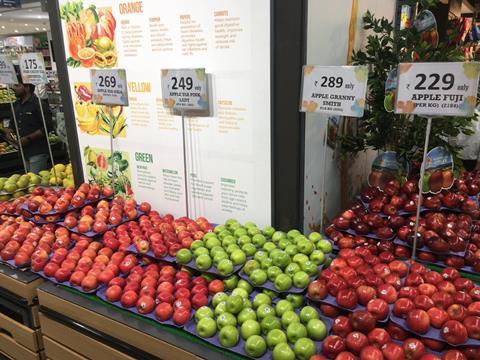USDA report forecasts apple imports to grow in 2023/24 due to domestic production challenges and increased US shipments

The latest India Fresh Deciduous Fruit Annual report from the US Department of Agriculture’s Foreign Agricultural Service (USDA) forecasts apple imports will climb to 410,000 tonnes in the 2023/24 season, a 13.9 per cent increase on the revised USDA estimate for 2022/23.
The forecast growth comes after a challenging year for domestic production, with severe weather including flash floods, landslides, snow, and hailstorms across the state of Himachal Pradesh and union territory Jammu and Kashmir, India’s dominant apple growing regions. These adverse weather conditions and subsequent road disruptions affected overall fruit quality and increased demand for imported fruit.
Usually, domestically produced apples are primarily consumed in northern India’s urban areas due to limited cold chain infrastructure, the report notes. Because of the distribution difficulties, other regions rely on imported apples.
Since MY 2021/22, India’s main supplier of apples has been Turkey, last year commanding a 32 per cent share of total apple imports, followed by Iran at 22 per cent and Italy at 11 per cent. These suppliers, together with Chile and South Africa, have increased their market share at the expense of US apples, which have faced retaliatory tariffs since 2019.
India recently lifted the retaliatory tariff, which added 20 per cent on top of the standard import duty of 50 per cent. US market share for imported apples shrank from 6 per cent in MY 2020/21 to less than 1 per cent in MY 2022/23 as a result. With the removal of the supplementary tariff, the USDA expects to see a rebound in US exports to the Indian market.
In addition to tariff barriers, India’s apple import trade faces key regulatory challenges. The Food Safety and Standards Authority of India (FSSAI) requires certification stating that imported apples do not contain genetically modified (GM) organisms and are not of GM-origin.
Despite these hurdles, the USDA expects demand for fresh apples will continue to grow due in part due to consumers’ perception of the fruit’s positive health benefits as well as a growing population with improving disposable incomes, and year-round market availability.



